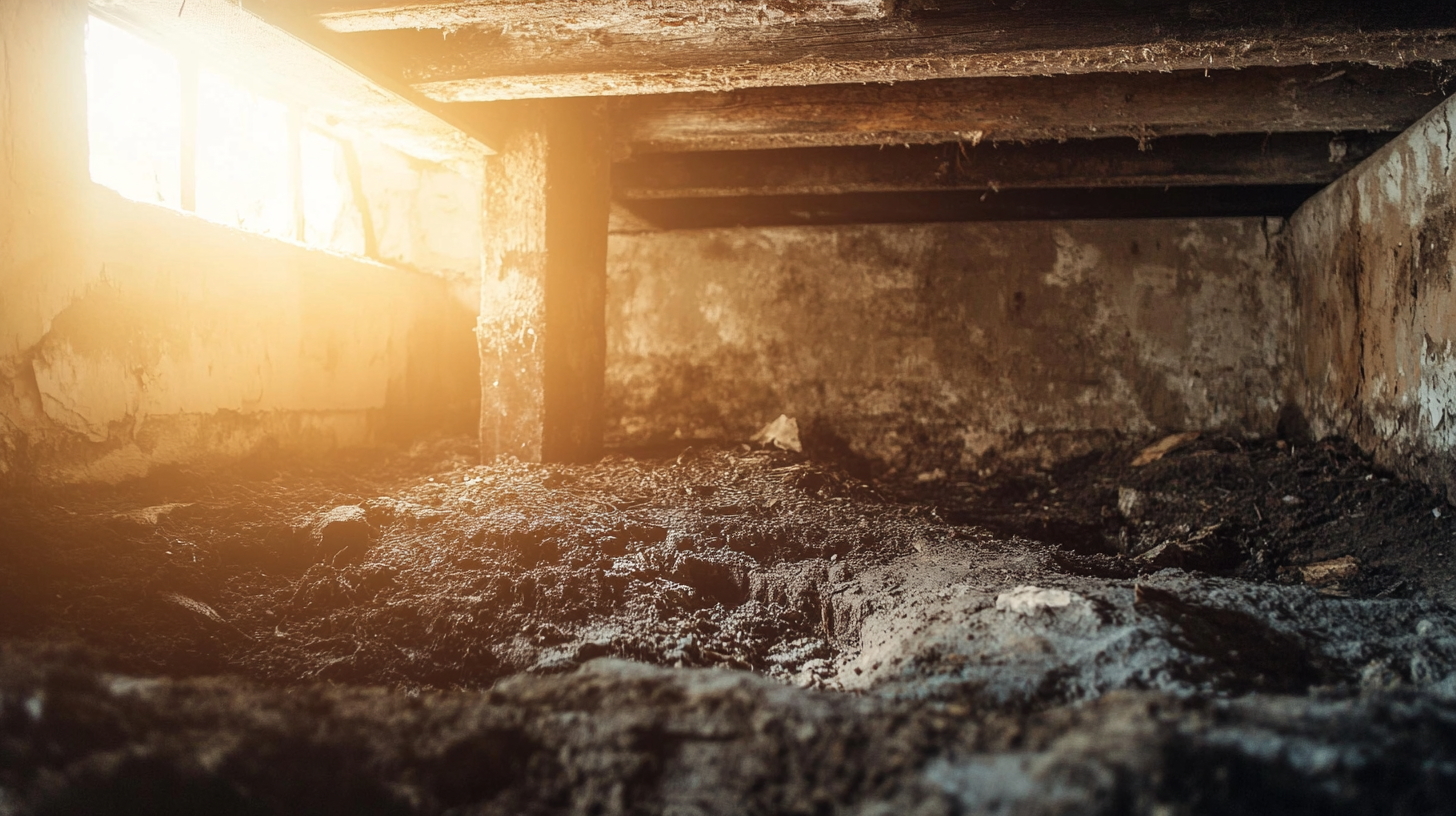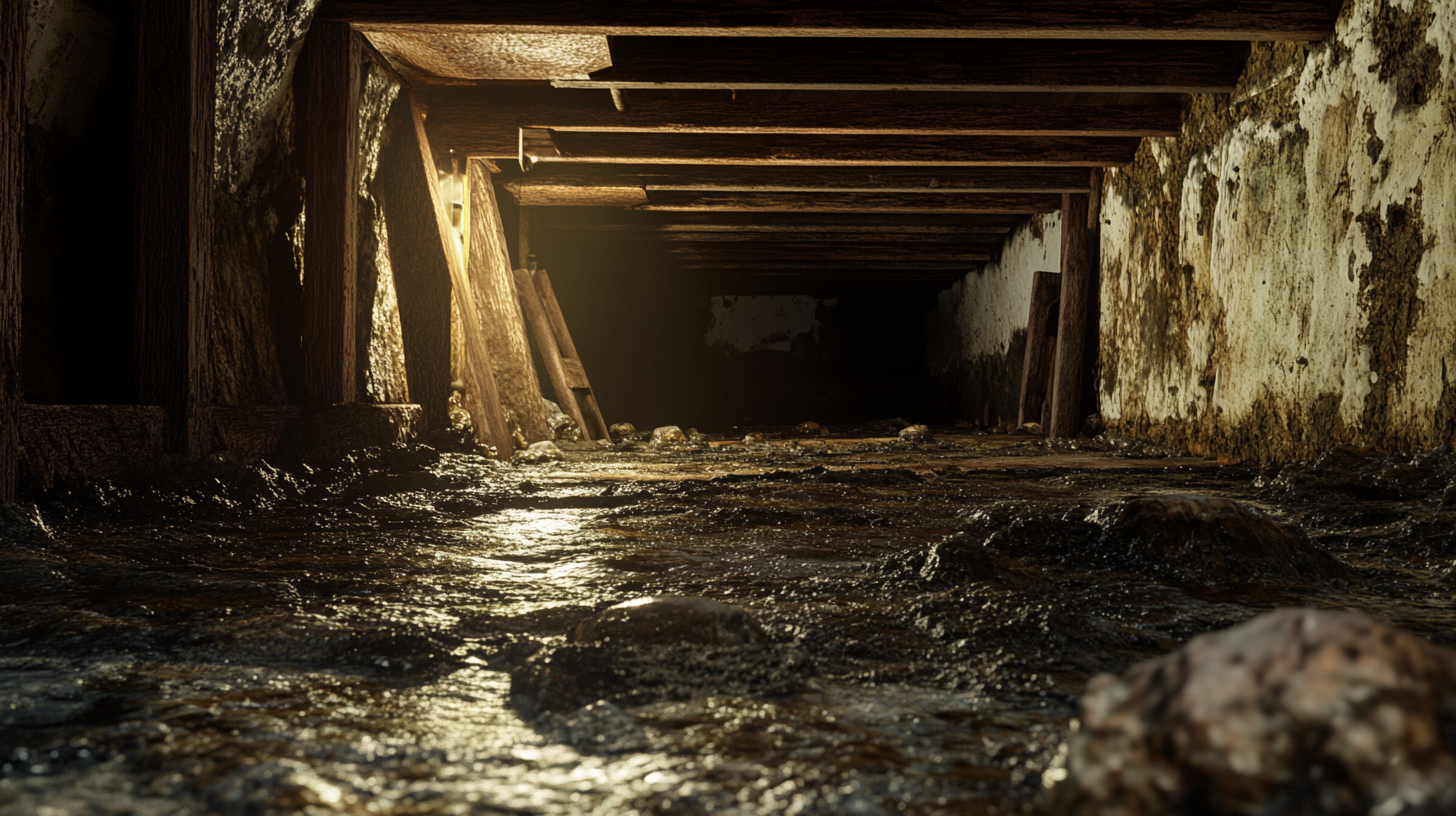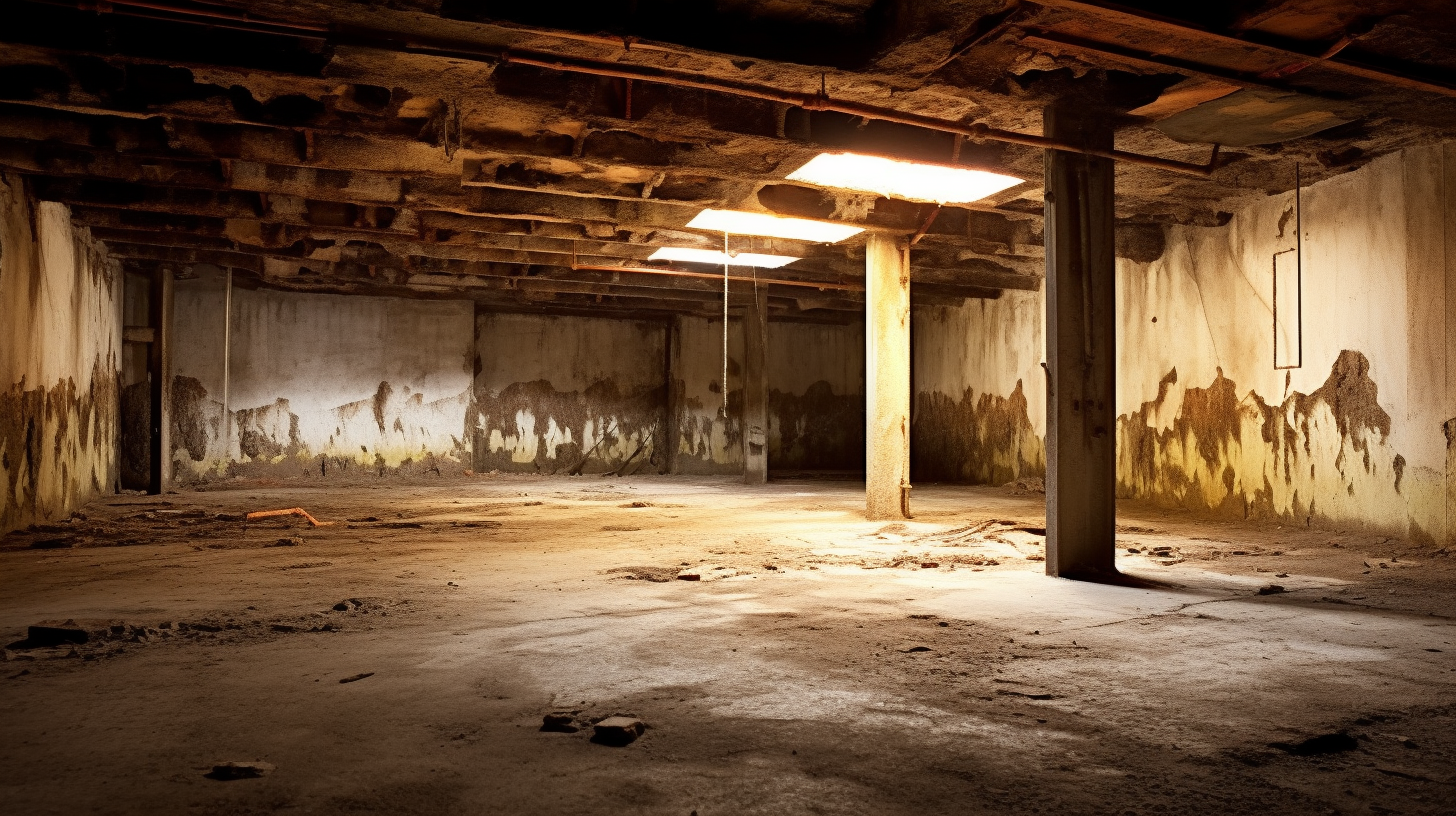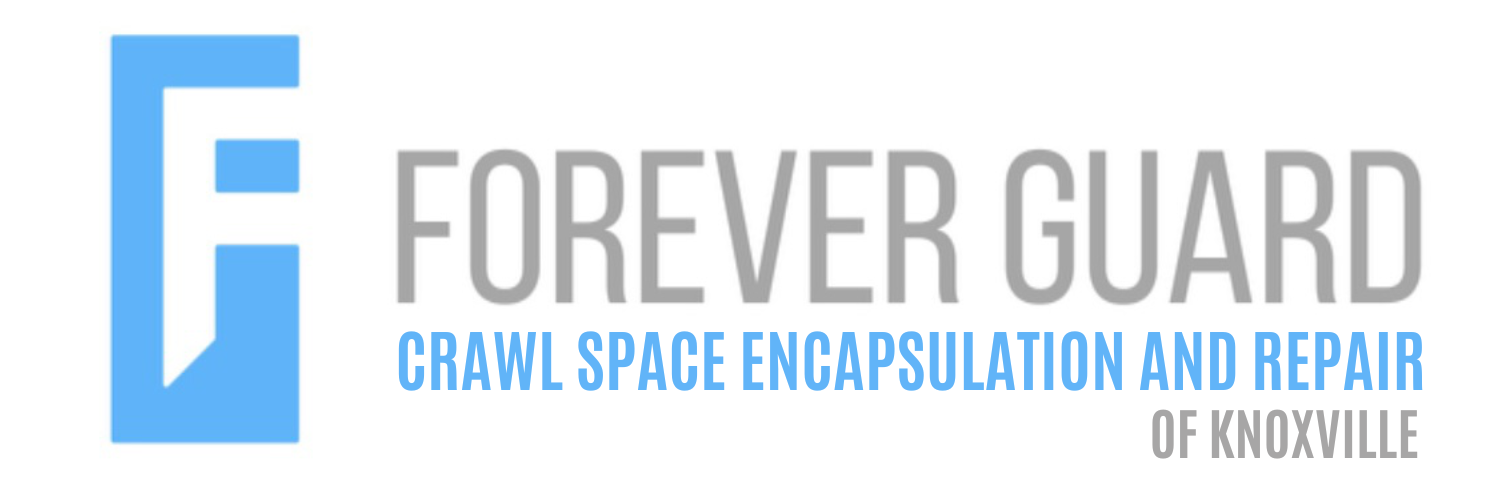Now IS THe Time To...

Crawl Space Services In Knoxville, TN
Stetson Howard: 865-432-6743
CRAWL SPACE ENCAPSULATION, REPAIR, WATERPROOFING & MOLD REMOVAL
No-Obligation, Free Inspections
No-Obligation Free Estimates
We Warranty All of Our Work
100% Satisfaction Guaranteed
Understanding and considering local weather patterns and environmental conditions are essential when selecting waterproofing solutions for buildings and infrastructure. Weather factors, such as rainfall, humidity, temperature fluctuations, and exposure to sunlight, directly impact the durability and effectiveness of waterproofing materials. For instance, regions with heavy rain or high humidity levels demand waterproofing systems that provide robust moisture resistance, while areas with extreme temperature shifts require materials capable of expanding and contracting without cracking.
Environmental conditions, such as proximity to bodies of water, soil composition, and elevation, also influence waterproofing needs. Buildings near water sources, like rivers or coastal areas, are exposed to higher groundwater pressure, making it crucial to use materials that withstand hydrostatic pressure and prevent seepage into foundations. Soil properties, like clay or sand content, affect drainage and moisture retention around structures, which can lead to water buildup or cause the foundation to shift over time if not managed with effective waterproofing.
Choosing waterproofing solutions that align with specific local environmental conditions helps extend the lifespan of buildings and infrastructure, prevents costly water damage, and ensures the long-term structural integrity of these investments. With the right materials and installation suited to climate and location, waterproofing becomes a strategic shield, safeguarding against the unique environmental challenges of each region.
Why Climate Matters in Waterproofing
Selecting the right waterproofing solution is crucial for protecting buildings against climate-related wear and damage. Local climate conditions play a significant role in determining the performance and durability of waterproofing materials. Different climates expose buildings to unique environmental stresses, such as heavy rainfall, intense heat, freezing temperatures, and humidity, each impacting the effectiveness of waterproofing materials in specific ways. To prevent water intrusion and structural damage, it’s essential to align waterproofing choices with the demands of the local climate, ensuring long-term resilience and protection.
The Role of Climate in Waterproofing Performance
Environmental exposure is a primary factor influencing the performance of waterproofing materials. The combination of rain, snow, heat, cold, and humidity can either enhance or compromise a material’s ability to create an effective moisture barrier. For instance, heavy rainfall and high humidity increase the risk of water intrusion, especially if materials lack the necessary resistance. Likewise, in climates with freeze-thaw cycles, water within building materials can freeze and expand, causing cracks and weakening the waterproofing layer over time. Temperature fluctuations can also lead to building movement, where expansion and contraction impact the waterproofing system’s ability to maintain a continuous seal.
Waterproofing in these varied climate conditions requires selecting materials designed to withstand specific environmental challenges, ensuring they remain durable and effective regardless of weather changes.
Common Climate Factors to Consider
Certain climate factors require particular attention when choosing waterproofing materials. Areas with high rainfall or humidity demand solutions that can endure constant moisture without deteriorating. Temperature extremes also affect material flexibility and performance, as both high and low temperatures can weaken certain waterproofing options, and freeze-thaw cycles can significantly impact rigid materials. Sunlight and UV exposure in warmer regions can degrade some materials over time, reducing their protective qualities and lifespan. Similarly, high winds and frequent storms can physically wear down waterproofing materials, accelerating the need for repair or replacement.
Understanding these climate influences is essential for selecting waterproofing solutions that will provide enduring protection, tailored to the unique conditions of each location.
Impact of Temperature Fluctuations on Waterproofing Materials
Temperature fluctuations present a unique challenge for waterproofing materials, as they can significantly affect the performance and durability of waterproofing systems. Changes in temperature cause building materials to expand and contract, creating stress on waterproofing layers that may result in cracks or adhesion loss if materials are not designed to accommodate this movement. In regions with pronounced seasonal temperature shifts, selecting waterproofing materials that remain resilient under these conditions is essential for maintaining effective, long-term moisture protection.
Expansion and Contraction of Building Materials
Temperature fluctuations cause building materials to expand in heat and contract in cold, which places considerable stress on waterproofing layers. When waterproofing materials are inflexible, they may crack or separate from the surface as the structure moves, allowing water to penetrate and causing potential damage to the building. Effective waterproofing materials for such conditions are those that offer flexibility, allowing them to stretch or compress in response to temperature changes without losing adhesion or integrity.
Flexible membranes, such as EPDM (Ethylene Propylene Diene Monomer) and polyurethane, are ideal choices for structures exposed to temperature fluctuations, as they can expand and contract with the building materials while maintaining a secure, continuous barrier against moisture. Liquid-applied systems are also effective in these environments, providing seamless, flexible layers that bond well to surfaces and adapt to temperature shifts, ensuring ongoing protection.
Freeze-Thaw Resistance in Cold Climates
In cold climates, freeze-thaw cycles pose an additional challenge to waterproofing systems. When water enters cracks and freezes, it expands, widening the cracks and compromising the waterproofing system. This cycle of freezing and thawing can cause substantial damage to materials that are not specifically designed to endure such conditions, making them brittle and prone to failure. Waterproofing solutions in these areas must therefore possess freeze-thaw resistance to prevent structural damage and maintain their effectiveness.
Crack-bridging membranes, such as polyurethane or rubber membranes, are well-suited to cold climates as they can expand and contract without losing their waterproofing capabilities, even in freeze-thaw conditions. Cementitious coatings enhanced with special additives also improve freeze-thaw resistance, making these materials suitable for cold climates where protecting against freeze-induced cracking is critical to the longevity and performance of the waterproofing system.
Pros and Cons of Waterproofing Materials Based on Climate
Choosing waterproofing materials suited to the local climate is crucial for achieving effective, long-lasting protection. Each material type has specific advantages and limitations in different environmental conditions, from wet and humid climates to areas with extreme temperature changes. Understanding these pros and cons helps ensure that the selected materials provide optimal performance and durability tailored to each climate's demands.
Liquid-Applied Membranes
Liquid-applied membranes are known for their flexibility and adaptability to temperature changes and building movement, making them highly versatile. Their seamless application minimizes the risk of leaks, which is especially beneficial in wet climates. Additionally, with the right formulation, liquid-applied membranes can perform effectively in both hot and cold environments.
However, these membranes require dry conditions for proper application and curing, which can limit their use in constantly rainy areas. Furthermore, multiple coats are often necessary to achieve full protection, extending the application time and effort needed to complete the waterproofing process.
Sheet Membranes
Sheet membranes are durable and thick, providing robust protection against high water pressure and temperature fluctuations. Their high UV resistance makes them well-suited for hot and sunny climates, and their consistent thickness ensures reliable performance, even in colder weather.
On the downside, sheet membranes generally require professional installation, which can be time-intensive. Additionally, they are less flexible than liquid-applied systems, which may be a disadvantage in regions where significant temperature swings occur, as they may not accommodate as much movement in the building structure.
Cementitious Coatings
Cementitious coatings are easy to apply and offer a cost-effective solution for wet environments and areas with moderate temperature changes. These coatings resist hydrostatic pressure effectively, making them a good choice for basements and foundations. They are particularly long-lasting in conditions of constant moisture, providing a reliable barrier against water ingress.
However, cementitious coatings lack flexibility compared to other options, making them prone to cracking in freeze-thaw cycles or areas with significant temperature variations. For optimal adhesion, they also require a smooth surface, which may necessitate additional surface preparation.
Best Practices for Waterproofing in Extreme Climates
Extreme climates present heightened challenges for waterproofing, requiring tailored approaches to ensure long-term protection against severe weather events and fluctuating temperatures. For climates prone to intense weather, such as hurricanes, heavy snowfall, or seasonal flooding, using durable, resilient waterproofing systems is essential to safeguarding structures. By combining strategic material selection, regular maintenance, and effective layering techniques, you can create a waterproofing system capable of withstanding the demands of extreme environments.
Preparing for Extreme Weather Events
In areas subject to hurricanes, flooding, or severe storms, waterproofing materials must be exceptionally durable and resistant to high water pressure and salt exposure. Heavy-duty options like bituminous membranes and polyurethane systems offer robust protection in coastal and storm-prone areas, forming a reliable barrier against intense rainfall and water intrusion. Similarly, in regions with heavy snow and ice, it is essential to choose waterproofing materials specifically designed for freeze-thaw cycles. This capability prevents cracks and structural damage that can occur when water freezes, expands, and then thaws, causing stress on the waterproofing layer.
Regular Maintenance and Inspections
Regular maintenance is vital in extreme climates, as harsh weather conditions can wear down waterproofing materials over time. Periodic inspections help identify early signs of damage, such as cracks or separations, allowing for prompt repairs before more extensive issues develop. In regions with high rainfall or intense heat, some materials, like waterproofing paints and sealants, may require seasonal reapplication to maintain their protective qualities. By keeping up with maintenance and reapplication schedules, you can prolong the effectiveness of your waterproofing system and ensure consistent protection against environmental stressors.
Combining Waterproofing Systems
For enhanced protection in extreme climates, combining multiple waterproofing systems is often beneficial. Using layered waterproofing methods, such as pairing sheet membranes with liquid-applied coatings, provides extra durability and resilience, forming a robust defense against moisture. Additionally, ensuring that proper drainage systems and ventilation are in place is crucial to prevent moisture buildup and alleviate pressure behind waterproofing layers. This combination of waterproofing layers, drainage, and ventilation helps maintain the integrity of the system, even in the face of extreme weather conditions.
How does climate affect waterproofing choices?
Selecting the appropriate waterproofing material for each area of your home is essential to protect against moisture damage, ensure longevity, and maintain a healthy indoor environment. Each space in your home has unique requirements based on exposure levels, potential for water seepage, and specific environmental factors. For example, areas like bathrooms and kitchens demand waterproofing materials resistant to constant moisture, while basements and foundations require solutions that can withstand hydrostatic pressure. Understanding the needs of each area allows for more effective waterproofing that not only prevents damage but also extends the lifespan of your home’s structures and finishes.
Bathrooms and Kitchens
Bathrooms and kitchens are high-moisture areas where waterproofing is critical to prevent issues such as mold growth, mildew, and water damage. These spaces frequently experience spills, splashing, and humidity, making it essential to choose waterproofing materials that are durable, resilient, and able to resist mold and mildew. Recommended materials for these areas include liquid-applied membranes, waterproofing paints, and cementitious coatings. These materials are well-suited for application on walls, floors, and shower areas, providing seamless, long-lasting protection against water intrusion in spaces with frequent moisture exposure.
Basements and Foundations
Basements and foundations are particularly vulnerable to groundwater seepage and require a waterproofing approach that addresses the challenges of below-grade construction. In these areas, materials must provide long-term protection and withstand hydrostatic pressure from surrounding soil and groundwater. Cementitious coatings are commonly recommended for these environments due to their strong bond with concrete and effective water resistance. Bituminous membranes and sheet membranes are also excellent choices for below-grade waterproofing, offering additional durability and a reliable barrier against moisture infiltration, which is essential to maintain the integrity of basements and foundations over time.
Roofs and Balconies
Roofs and balconies face constant exposure to the elements, including sun, rain, and wind, and therefore require waterproofing materials that are both highly durable and resistant to UV radiation. In these outdoor spaces, waterproofing solutions must offer strong weather resistance and maintain their integrity under varying environmental conditions. Sheet membranes, bituminous membranes, and liquid-applied membranes are ideal choices for roofs and balconies, providing robust and long-lasting protection that safeguards against water ingress and environmental wear. By choosing materials suited to these demanding conditions, you can effectively protect your home’s exterior surfaces from moisture damage and ensure durability.
Selecting the right waterproofing material for each specific area of your home is a strategic decision that ensures effective protection, durability, and long-term value. With the appropriate materials in place, you can maintain a safe, dry, and structurally sound home, regardless of moisture levels or environmental exposure.
FAQs
-
How does climate affect waterproofing choices?
Climate affects waterproofing by impacting material performance and durability. Different climates expose materials to conditions like heavy rain, UV radiation, or freeze-thaw cycles, requiring climate-suited options to ensure long-lasting protection.
-
What waterproofing works in wet climates?
In wet climates, materials like liquid-applied membranes, bituminous membranes, and cementitious coatings are ideal as they offer durable moisture resistance and prevent mold, mildew, and water intrusion in high-humidity or rainy environments.
-
Which materials withstand temperature changes best?
Flexible membranes, such as EPDM and polyurethane, adapt well to temperature fluctuations, expanding and contracting with building materials to maintain their waterproofing seal and prevent cracking.
-
Why is UV resistance important?
UV resistance is crucial in sunny climates, as UV rays can degrade certain materials over time, reducing their waterproofing effectiveness. UV-resistant options like TPO and PVC membranes ensure durability in high-exposure areas.
-
How often should waterproofing be inspected?
In extreme climates, waterproofing should be inspected regularly—ideally, seasonally—to detect early signs of wear and ensure timely maintenance, especially in areas with heavy rainfall, extreme heat, or freeze-thaw conditions.
Recent Blog Posts
Crawl Space News



Schedule Your FREE Crawl Space Evaluation!
Did you know YOU DON'T HAVE TO BE HOME for us to provide you with your 100% FREE crawl space inspection and report?
Call Us Today at: 865-432-6743
Forever Guard Crawl Space Encapsulation and Repair of Knoxville is a specialty crawl space waterproofing company that services the greater Knoxville, TN and surrounding areas.
Business Hours
Sunday: 7:00 AM - 7:00 PM
Monday: 7:00 AM - 7:00 PM
Tuesday: 7:00 AM - 7:00 PM
Wednesday: 7:00 AM - 7:00 PM
Thursday: 7:00 AM - 7:00 PM
Friday: 7:00 AM - 7:00 PM
Saturday: 7:00 AM - 7:00 PM
legal info
All Rights Reserved | Forever Guard Crawl Space Encapsulation and Repair of Knoxville




